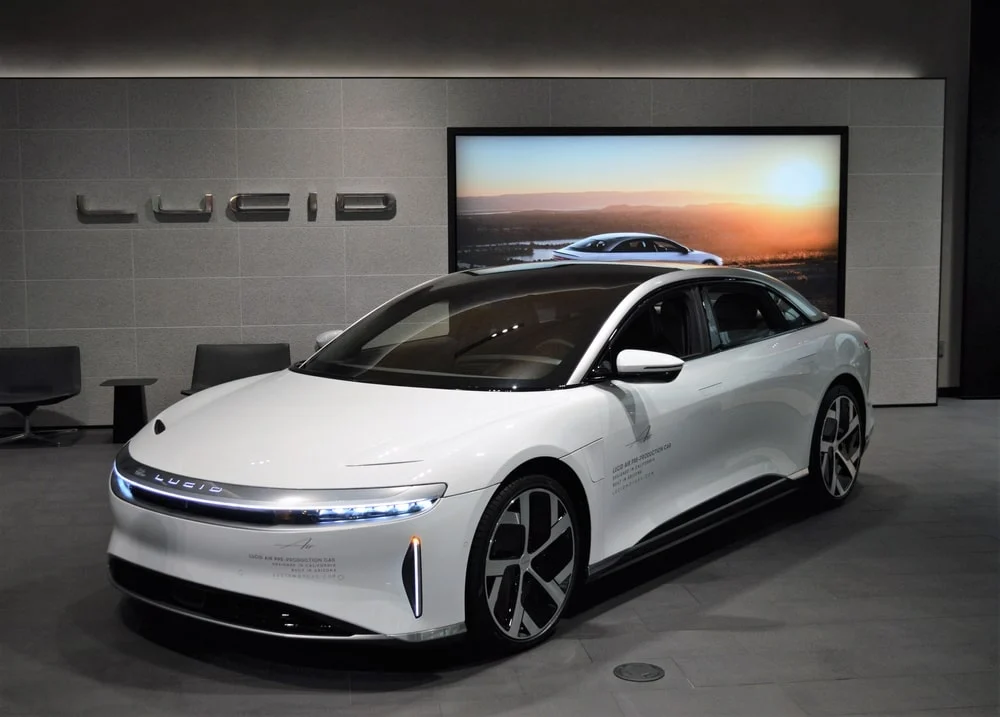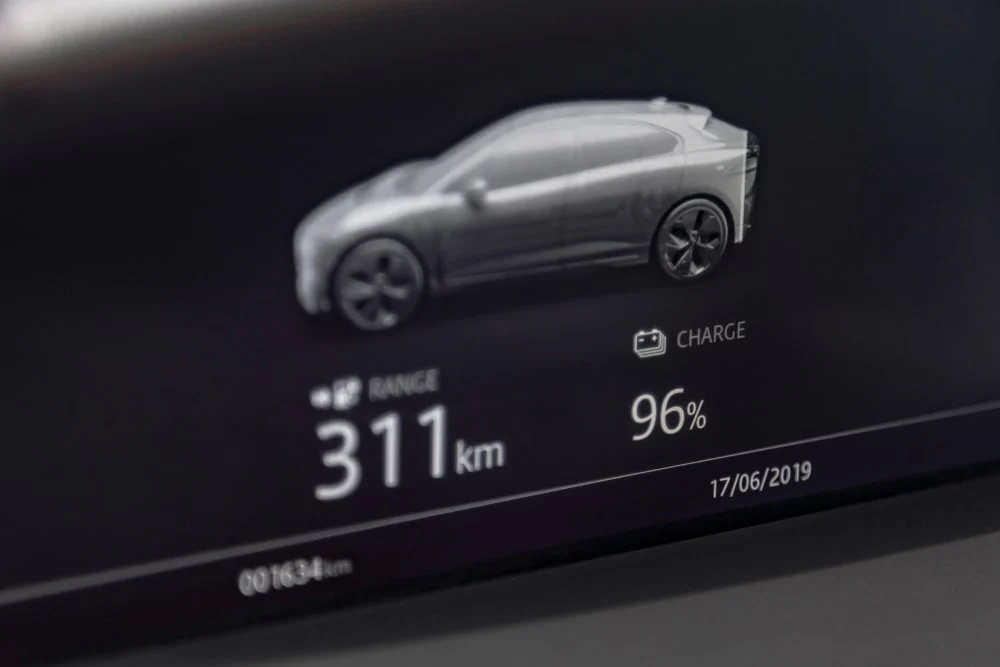
Range of Electric Cars and Growing Consumer Adoption
In 2022, electric car sales surpassed 10 million units globally. This represents a 55% increase compared to 2021. While electric car sales continue to set records, many still worry about the range of electric cars.
According to our Mobility Monitor report, around 40 percent of potential EV buyers are concerned about not being able to charge their car when needed and fear running out of power on the road. While understandable, these fears are largely unwarranted.

How Far Can Electric Cars Go?
Based on data available in December 2022, the average electric vehicle has a range of 348 km (216 miles). Of course, there’s no single correct answer when discussing EV range. How far an EV can go depends on the specific vehicle, the battery’s state of charge, your driving habits, and even the weather conditions.
Despite these variables, the median range of electric vehicles has significantly increased over the past few years.
Fun fact: In 2011, there were only three all-electric vehicle models on the market. According to the U.S. Environmental Protection Agency, their range was between approximately 100 km to 150 km (63 to 94 miles) on a full charge.
Today, as noted earlier, that number has grown considerably and now sits around 348 km (216 miles).

Longest Range EV
So, which EV has the longest range?
Currently, Lucid Air Dream (Range Edition) leads the pack. Based on moderate driving styles and favorable climate conditions, the real-world range is estimated to be 685 km (425 miles).

As mentioned earlier—and as we’ll delve into further in this article—the real-world EV range is influenced by several factors.
For instance:
The Lucid Air Dream Range Edition claims a minimum range of 505 km (313 miles) when driving on the highway in cold weather conditions and a maximum range of 960 km (596 miles) when driving in the city in mild weather conditions.
Top-5 EVs with the Longest Range
Of course, the Lucid Air Dream tops the list, but what about other models?
Here’s a quick overview of the top 5 electric car models that currently offer the longest range.
| 1. Lucid Air Dream Edition |
645 - 685 km (401 - 425 miles) |
| 2. Lucid Air Grand Touring |
665 km (413 miles) |
| 3. Mercedes EQS |
565 - 640 km (351 - 397 miles) |
| 4. Tesla Model S |
550 - 570 km (342 - 354 miles) |
| 5. Lucid Air Pure |
560 km (348 miles) |
|
Disclaimer: For a comprehensive list, we excluded model variations and used data from EV Database. Range is based on moderate driving style and climate conditions; real-life values may vary significantly.
|
Â
Shortest Range EV
On the flip side, you might wonder, which electric car has the shortest range?
Generally, the larger the vehicle, the bigger the battery can be. Conversely, smaller city cars, designed to be agile, inexpensive to run, and easy to park, aren’t built for long-distance travel. They tend to have shorter ranges.

The smallest EV we found when writing this article was the Smart EQ fortwo Cabrio, a two-seater city car (with convertible options) with a range of 95 km (59 miles) on a single charge. However, a full charge takes only 55 minutes at a charging speed of 22 kW—much faster than charging larger-battery EVs.
The Growing Range of EVs
Back in the early days of EVs, the best-selling electric car, the Nissan LEAF, had a maximum range of about 160 km (100 miles). Fast forward to today, and the 2023 Nissan Leaf offers a range of up to 341 km (212 miles).
New models like the Hyundai Kona, Volkswagen ID.4, and Kia EV6 (all reasonably priced) can reach 400-500 km (249-310 miles) on a single charge. Why the improvement?
Batteries have become more powerful and less expensive.
Batteries are the most expensive component in making an EV. Their cost has dropped dramatically over the past decade, making EVs increasingly competitive with internal combustion engine cars. By 2026, EVs are expected to reach cost parity with traditional vehicles.

What Affects the Driving Range for EVs?
We’ve already discussed that the primary factor affecting an EV’s range is the size of its battery.
However, battery size isn’t the only thing that impacts an EV’s range.
Your driving speed, acceleration, use of air conditioning or heating, and external temperature all play a role in how far you can go on a single charge.
Let’s break it down.
Driving Speed
The faster you drive or accelerate, the quicker your EV’s battery drains.
Temperature
Colder temperatures outside accelerate battery discharge rates.
Electrically-Powered Features
Using features like heating, cooling, or other electrical-powered systems reduces the distance an EV can travel on a single charge.
To illustrate these factors, Renault offers a handy tool for its ZOE e-Tech Electric where you can input driving conditions and see the battery capacity change.

Best EV Range
While an EV range of more than 600 km (372 miles) is impressive, it doesn’t necessarily mean it’s the ideal range for everyone.
Simply put, a good range meets the needs of the driver.
Range is a key metric when choosing an EV, and many potential EV buyers consider it carefully before investing.
Practically speaking, however, range isn’t the sole determinant of a great EV experience.

Range Should Match Your Driving Behavior
The vast majority of people don’t come close to fully depleting their EVs in a single day, whether they drive an EV or a gasoline car. For instance, in the U.S., the average American drives about 21,687 km (13,476 miles) per year—or roughly 59.5 km (37 miles) a day.
In Europe, this average varies by country but is typically less than half the distance driven in the U.S.; individuals in Germany drive an average of approximately 19 km (11 miles) per day, while in Greece, this number can drop as low as 5.6 km (3.4 miles) per day.
The bottom line is that most daily commutes won’t even come close to reaching an EV’s maximum range.

Moreover, since “topping up†an EV happens differently than filling a gas tank—with charging often done overnight or during work hours—the fear of running out of power isn’t as prevalent as it might initially seem.
Vehicle manufacturers have also worked hard to alleviate drivers’ range anxiety with various innovative features, including the Driving to Empty (DTE) metric displayed on a vehicle’s dashboard.
What Is DTE?
DTE stands for Driving to Empty and is a dynamic, extrapolated estimate of how far you can drive with the remaining charge in your EV’s battery. In simple terms, it’s how far you can go until your battery is depleted.
Since the range shown is an average based on current conditions, it’s always an estimate of future performance. This number is derived from how long you’ve already driven on a single charge, the current state of charge, and driving conditions, then converted into a distance.
For drivers, this knowledge is crucial because, unlike gasoline cars, EVs don’t have leeway once the range hits zero. At that point, the vehicle must be towed to a charging station—an expensive and inconvenient situation, both in terms of time and money, and detrimental to the battery itself.
To prevent this, many electric vehicles make it challenging to fully deplete the battery. For example, some premium vehicles alert you when you’re nearing a charging station. Others, like the Nissan Leaf, enter “Turtle Mode†before shutting off completely, allowing you to crawl at 50 km/h (30 mph) for over a kilometer, giving you enough time to seek help.
However, since DTE is based on current conditions, it shouldn’t be taken as absolute truth. A range of 100 kilometers will differ if you change your driving style or turn on your heater and headlights. If you’re approaching empty and the DTE suggests you can just make it, it’s best to adopt an energy-efficient driving style.
Do Electric Cars Lose Range Over Time?
Yes, but not as much as you might think or as quickly as you might fear. Current estimates suggest most EV batteries will last between 15-20 years or 100,000 to 200,000 miles before needing replacement. It’s more likely that the battery will outlast the car itself.
Contrary to popular belief, EV batteries don’t suddenly stop working. Instead, they degrade gradually over time.

A battery gradually loses capacity, with many reporting only a slight percentage loss over several years. On average, the annual decline across all vehicles is approximately 2.3 percent. For example, if you buy an EV today with a 350 km (217 miles) range, after five years, the battery will have lost only about 40 km (24 miles) of accessible range.
To ease consumer concerns, many manufacturers offer warranties on their batteries, typically lasting eight to ten years, which exceeds the standard five-year warranty for internal combustion engines.
Learn More About EV Charging
Driving an electric vehicle is, in many ways, quite different from driving a gas-powered car. The concept of charging, in particular, is new to many people. Check out our extensive guide to learn everything about EV charging: how much it costs, how long it takes, the most common and preferred charging locations, the differences between Level 1, Level 2, and Level 3 charging, battery lifespan, and understanding the various cables, plugs, and connector types.
Subscribe to our newsletter and stay updated on the latest innovation in EV technology.
Â
Â









